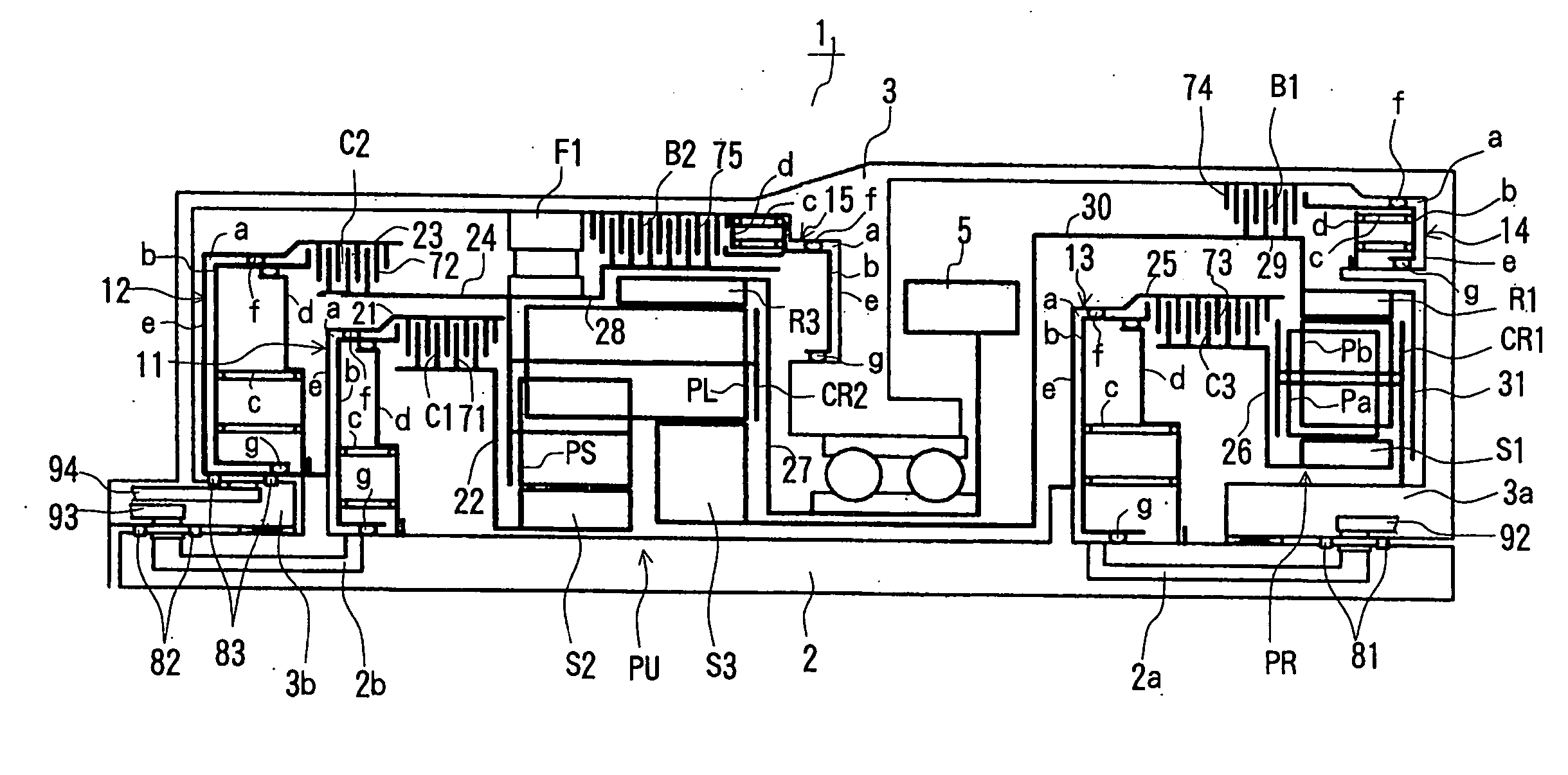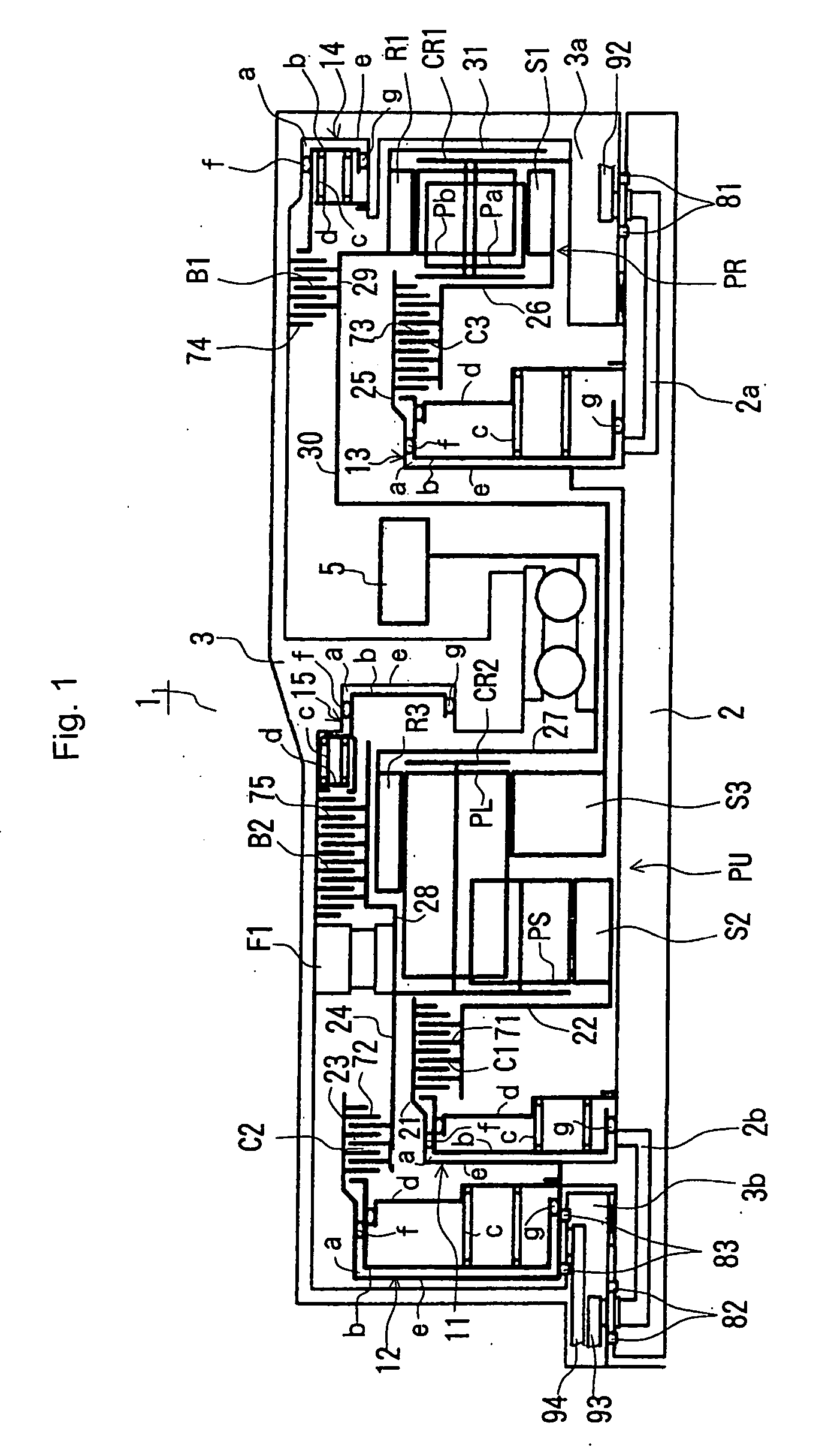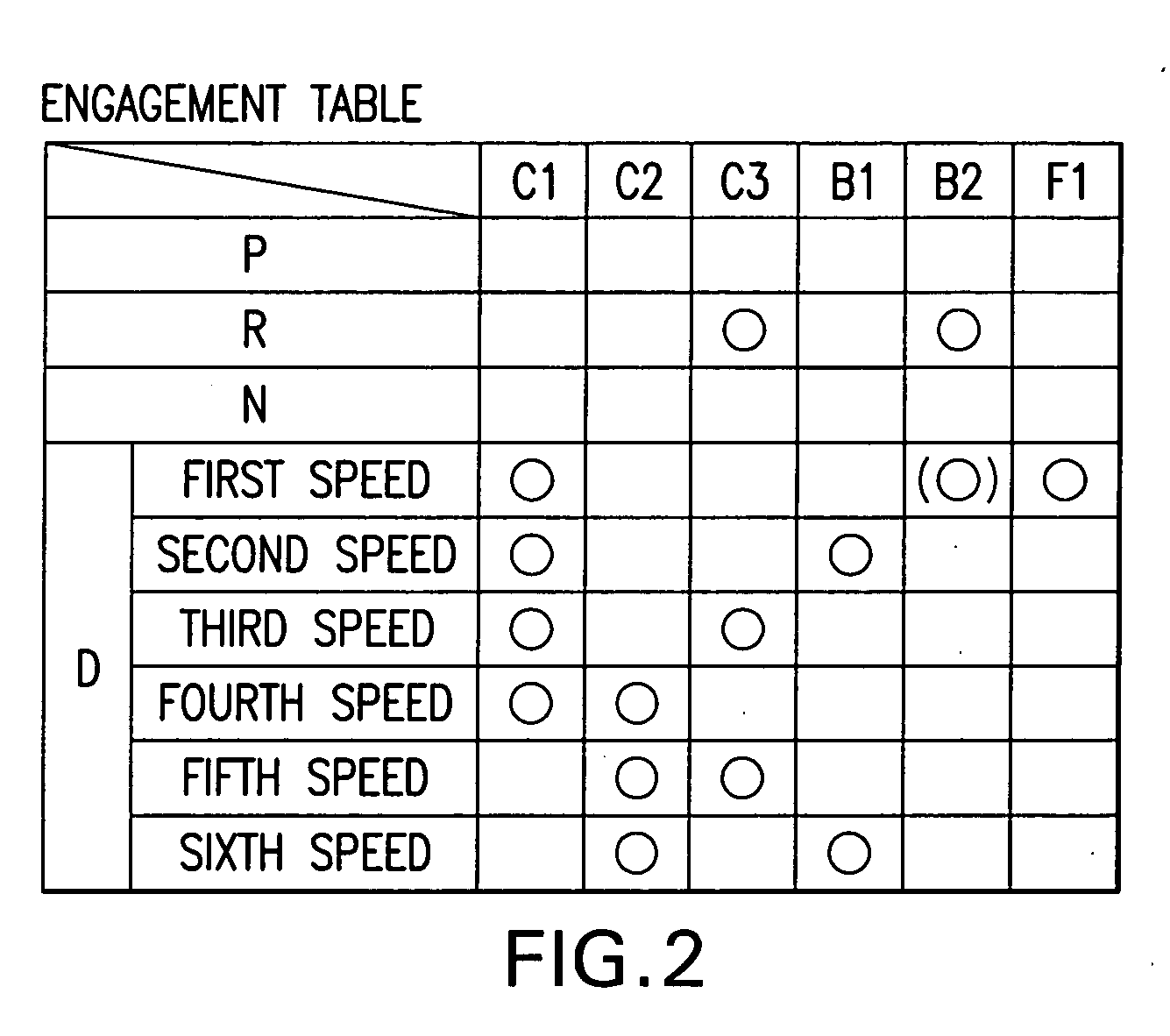Automatic speed changer
a technology of automatic transmission and speed change, which is applied in the direction of mechanical equipment, transportation and packaging, and gearing, etc., can solve the problems of reducing the controllability of automatic transmission, increasing the shock of speed change, and compact automatic transmission, so as to improve the efficiency of automatic transmission and reduce the cost. , the effect of simplifying the manufacturing process
- Summary
- Abstract
- Description
- Claims
- Application Information
AI Technical Summary
Benefits of technology
Problems solved by technology
Method used
Image
Examples
first embodiment
[0041] A first embodiment of the present invention will be described with reference to FIG. 1 through FIG. 3 below.
[0042] The automatic transmission of the first embodiment of the present invention as illustrated in FIG. 1 is particularly favorable for a FF (front engine, front wheel drive) vehicle, and has a torque converter housing, not illustrated, and a transmission case 3. Within the torque converter housing is a torque converter, not illustrated. The transmission case 3 houses an automatic transmission 1, a counter shaft unit (drive wheel transmission mechanism), not illustrated, and a differential unit (drive wheel transmission mechanism).
[0043] The torque converter is arranged, for example, with its axis centered on input shaft 2 of the automatic transmission 11, which is on the same axis as the output shaft of the engine (not illustrated), and the automatic transmission 11 is also centered on the axis of the engine.
[0044] The above-mentioned counter shaft unit includes a...
second embodiment
[0082] A second embodiment, which is a partial modification of the first embodiment, will be described with reference to FIG. 4. FIG. 4 is a schematic cross-sectional diagram of the automatic transmission of the second embodiment. Components of the second embodiment which are the same as those of the first embodiment are denoted by the same reference numerals in FIG. 4, and description thereof omitted, except for those components partially modified.
[0083] As FIG. 4 illustrates, the automatic transmission 12 of the second embodiment has the input and output ends the reverse of the automatic transmission 1 of the first embodiment (see FIG. 1). However, the operations establishing the first speed forward through the sixth speed forward and the first speed reverse are similar (see FIG. 2 and FIG. 3).
[0084] As shown in FIG. 4, in the automatic transmission 12 of the second embodiment, the first planetary gear unit PR and the clutch C3 are located at one axial end of the planetary gear ...
third embodiment
[0092] The third embodiment, which is a partial modification of the first embodiment will be described with reference to FIG. 5 through FIG. 7. Components of the third embodiment which are the same as those of the first embodiment are denoted by the same reference numerals in FIGS. 5-7, and description thereof omitted, except for those components partially modified.
[0093] As FIG. 5 illustrates, the automatic transmission 13 of the third embodiment differs from the first embodiment in the configuration of the planetary gear unit PR, in that a brake B3 (the first brake) replaces the clutch C3, and in that the carrier CR1 of the first planetary gear unit PR is modified so as to be capable of being fixed by the brake B3.
[0094] In this third embodiment brake B3 is located on the side of the first planetary gear unit PR opposite the second planetary gear unit PU (right side of diagram). This brake B3 comprises a hydraulic servo 16, friction plates 76, and a hub 33. Further, the brake B1...
PUM
 Login to View More
Login to View More Abstract
Description
Claims
Application Information
 Login to View More
Login to View More - R&D
- Intellectual Property
- Life Sciences
- Materials
- Tech Scout
- Unparalleled Data Quality
- Higher Quality Content
- 60% Fewer Hallucinations
Browse by: Latest US Patents, China's latest patents, Technical Efficacy Thesaurus, Application Domain, Technology Topic, Popular Technical Reports.
© 2025 PatSnap. All rights reserved.Legal|Privacy policy|Modern Slavery Act Transparency Statement|Sitemap|About US| Contact US: help@patsnap.com



